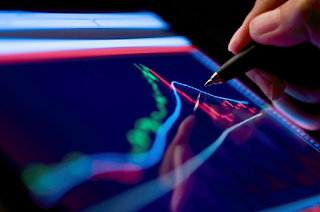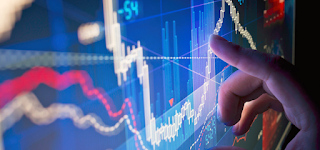TECHNICAL OR FUNDAMENTAL ANALYSIS?
Stock Analysis, JCI, Stock Investment, Stock Recommendations - Which is better than the two analyzes? Technical or fundamental analysis? Among the two there must be our favorite, but each of these analyzes also have advantages and disadvantages. So what are the advantages and disadvantages? Let's see.
A trader will generally think of doing something other than just predicting for hours, searching for the most appropriate formula or prediction or also collecting a bunch of unfailing news. They certainly know that the market is moving freely. Either the market is going up or down, going for a hundred or five hundred points, all of it is a market affair and not ours.
The main disadvantage of both analyzes is that both only "take into account the past data". From the data of the past is then made predictions whether the stock price will rise or fall. Because just by taking into account past data and assumptions, many things do not go into the calculations.
For example, the possibility of fraud, such as the company does not bring the right information to the public, the management of the shambles, embezzlement done, and others. Other factors such as natural disasters, the bubble economy also escaped the analysis. Even the "bandar" intentions that can fry stocks can not be incorporated into the analysis.
Not all news is able to drive prices let alone move significantly. Criteria news that is classified able to move the price is the news covering the economic field as well as the political conditions of a country. For example: The announcement of interest rates of the central bank of the country concerned (the Fed in the US for example), the terrorist attacks on the WTC US in 2001, the Great Tsunami disaster in Japan in 2011, and others.
Similarly, technically, when we analyze the price and the price coincidence rises then the bullish bias condition will overshadow, then when the market moves down then technical condition will indicate down. Why did this happen? Because all technical analysis is to follow the price. Just imagine, you see a chart and indicator that informs up and then you carry out a buy transaction but a few minutes later the price reverses down and the indicator changes its direction down.
Fundamental analysis or technical analysis can not be 100% applied in inefficient markets and interspersed with interventions such as BEI. For example Auto Rejection (AR) policy can affect the results of data analysis of stock price movements in IDX. A long enough stock suspension can also result in the calculation of a missed indicator.
Even if we mention fundamental analysis is able to provide the direction of big trends (big trend) price movements based on news, this is because the concept of analysis focus on "price drivers". If our goal is to predict future price movements, then it makes sense to focus on price movements either past or current price data. A technicalist assumes that the price movement that occurs is a reflection of behavior in the market indicated by price movements.
By focusing only on price movements, this will obviously shorten the time and we are not much troubled with a lot of news. But this market price is determined by the attitude of the traders who transact in it. This means that the market (price trends) is driven by the psychology of the trader (greed, fear, hope, despair) not from certainty of analysis.
A trader will generally think of doing something other than just predicting for hours, searching for the most appropriate formula or prediction or also collecting a bunch of unfailing news. They certainly know that the market is moving freely. Either the market is going up or down, going for a hundred or five hundred points, all of it is a market affair and not ours.
The main disadvantage of both analyzes is that both only "take into account the past data". From the data of the past is then made predictions whether the stock price will rise or fall. Because just by taking into account past data and assumptions, many things do not go into the calculations.
For example, the possibility of fraud, such as the company does not bring the right information to the public, the management of the shambles, embezzlement done, and others. Other factors such as natural disasters, the bubble economy also escaped the analysis. Even the "bandar" intentions that can fry stocks can not be incorporated into the analysis.
Not all news is able to drive prices let alone move significantly. Criteria news that is classified able to move the price is the news covering the economic field as well as the political conditions of a country. For example: The announcement of interest rates of the central bank of the country concerned (the Fed in the US for example), the terrorist attacks on the WTC US in 2001, the Great Tsunami disaster in Japan in 2011, and others.
Similarly, technically, when we analyze the price and the price coincidence rises then the bullish bias condition will overshadow, then when the market moves down then technical condition will indicate down. Why did this happen? Because all technical analysis is to follow the price. Just imagine, you see a chart and indicator that informs up and then you carry out a buy transaction but a few minutes later the price reverses down and the indicator changes its direction down.
Fundamental analysis or technical analysis can not be 100% applied in inefficient markets and interspersed with interventions such as BEI. For example Auto Rejection (AR) policy can affect the results of data analysis of stock price movements in IDX. A long enough stock suspension can also result in the calculation of a missed indicator.
Even if we mention fundamental analysis is able to provide the direction of big trends (big trend) price movements based on news, this is because the concept of analysis focus on "price drivers". If our goal is to predict future price movements, then it makes sense to focus on price movements either past or current price data. A technicalist assumes that the price movement that occurs is a reflection of behavior in the market indicated by price movements.
By focusing only on price movements, this will obviously shorten the time and we are not much troubled with a lot of news. But this market price is determined by the attitude of the traders who transact in it. This means that the market (price trends) is driven by the psychology of the trader (greed, fear, hope, despair) not from certainty of analysis.



Komentar
Posting Komentar